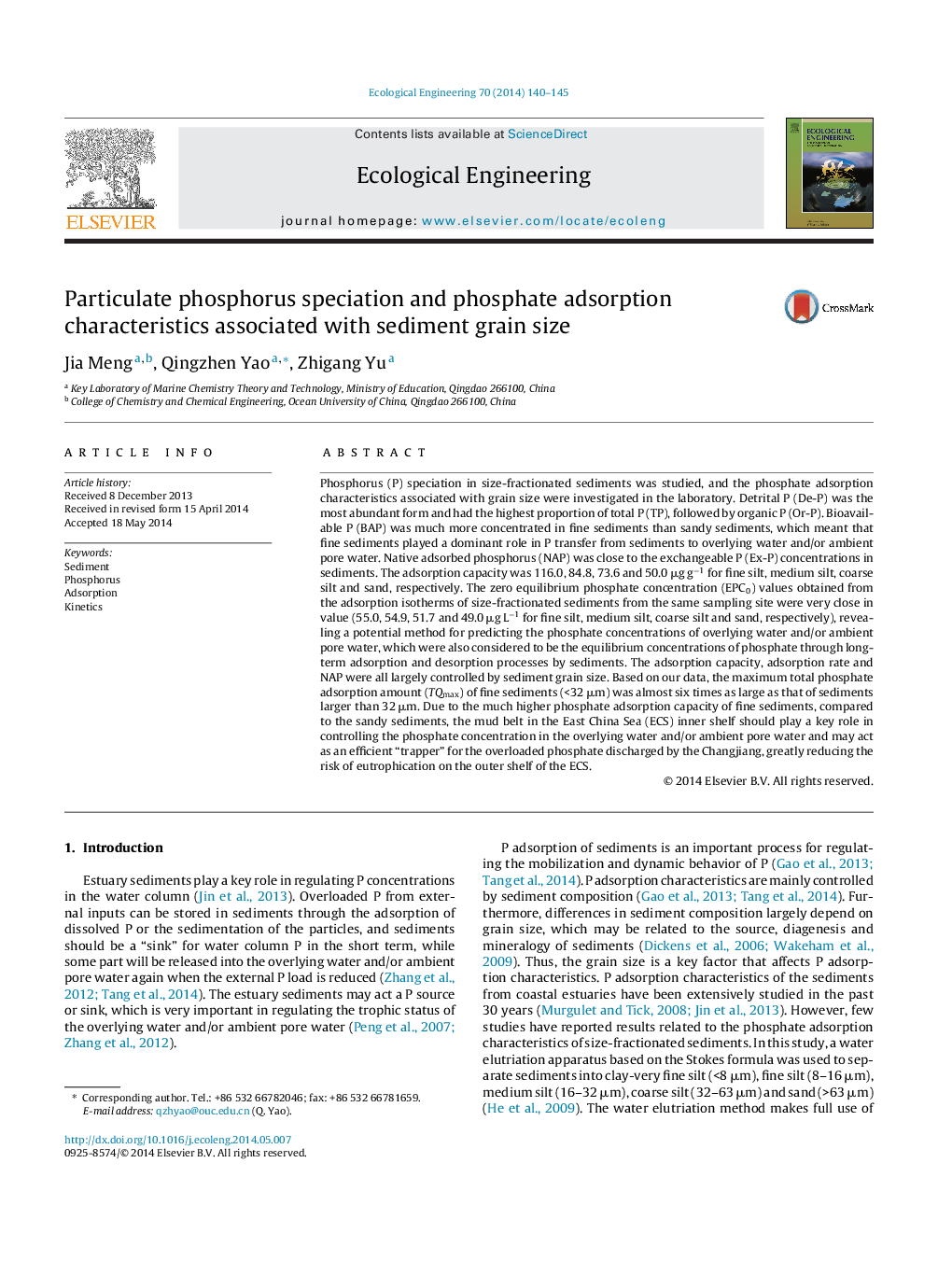| Article ID | Journal | Published Year | Pages | File Type |
|---|---|---|---|---|
| 6302123 | Ecological Engineering | 2014 | 6 Pages |
Abstract
Phosphorus (P) speciation in size-fractionated sediments was studied, and the phosphate adsorption characteristics associated with grain size were investigated in the laboratory. Detrital P (De-P) was the most abundant form and had the highest proportion of total P (TP), followed by organic P (Or-P). Bioavailable P (BAP) was much more concentrated in fine sediments than sandy sediments, which meant that fine sediments played a dominant role in P transfer from sediments to overlying water and/or ambient pore water. Native adsorbed phosphorus (NAP) was close to the exchangeable P (Ex-P) concentrations in sediments. The adsorption capacity was 116.0, 84.8, 73.6 and 50.0 μg gâ1 for fine silt, medium silt, coarse silt and sand, respectively. The zero equilibrium phosphate concentration (EPC0) values obtained from the adsorption isotherms of size-fractionated sediments from the same sampling site were very close in value (55.0, 54.9, 51.7 and 49.0 μg Lâ1 for fine silt, medium silt, coarse silt and sand, respectively), revealing a potential method for predicting the phosphate concentrations of overlying water and/or ambient pore water, which were also considered to be the equilibrium concentrations of phosphate through long-term adsorption and desorption processes by sediments. The adsorption capacity, adsorption rate and NAP were all largely controlled by sediment grain size. Based on our data, the maximum total phosphate adsorption amount (TQmax) of fine sediments (<32 μm) was almost six times as large as that of sediments larger than 32 μm. Due to the much higher phosphate adsorption capacity of fine sediments, compared to the sandy sediments, the mud belt in the East China Sea (ECS) inner shelf should play a key role in controlling the phosphate concentration in the overlying water and/or ambient pore water and may act as an efficient “trapper” for the overloaded phosphate discharged by the Changjiang, greatly reducing the risk of eutrophication on the outer shelf of the ECS.
Keywords
Related Topics
Life Sciences
Agricultural and Biological Sciences
Ecology, Evolution, Behavior and Systematics
Authors
Jia Meng, Qingzhen Yao, Zhigang Yu,
